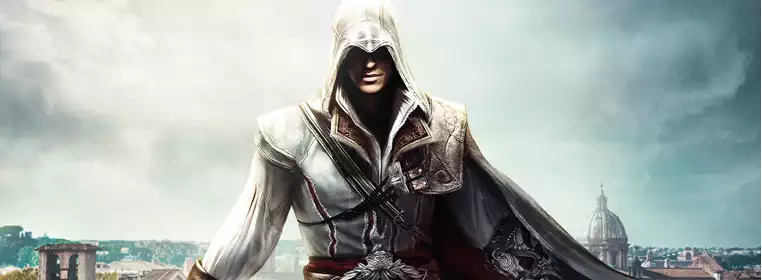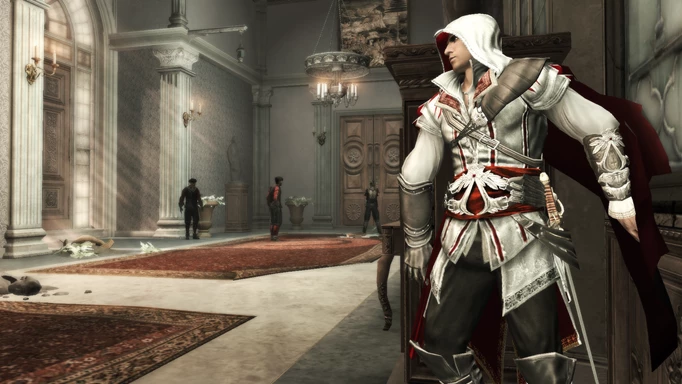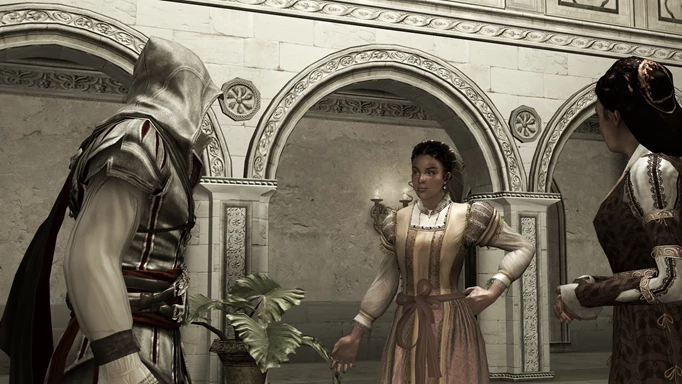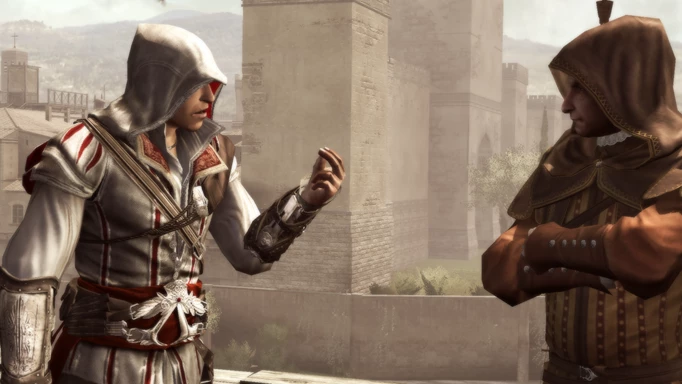You Should Play Assassin's Creed II Again

In theory, video games should only get better as more in a series release. Game developers have more time to think through their ideas and concepts - implementing them in a way that feels organic to a particular franchise.
Characters have time to grow on audiences, to the extent that new releases become appointment viewing for fans.However, what if I told you that Assassin's Creed II still resembles the series at its peak, despite it being over a decade old?
Sure, there are Assassin's Creed games that are better character studies. There are certainly Assassin's Creed games that are more technically impressive - this is coming from someone who put over 100 hours into Valhalla, after all! But if you want an idea of why fans fell in love with Assassin's Creed, you need to turn to Assassin's Creed II.
Refining Greatness

 Click to enlarge
Click to enlargeFirst off, it's important to establish that the only reason Assassin's Creed II soars is because the original Assassin's Creed walked before it. The 2007 inauguration of our favourite hooded figures introduced a bunch of game design ideas that perpetuate the biggest blockbuster titles of today.
The tower-based open-world design has gone through multiple iterations and may be a little overused at times. But it originated in the first Assassin's Creed, and feels refined in No. 2. Using a button on the controller as a shift action to open up a world of control scheme options is used in countless other titles in 2022. Just look at God of War, which has a whole combat system that revolves around mashing combos and holding state buttons.
Of course, the first Assassin's Creed game also introduced the skeleton-based control scheme. Essentially, this mapped the human body to the face buttons of the pad, with Triangle controlling the head, Square and Circle operating the arms, and X working the legs. Again, this is something that feels refined when combined with the updated parkour in Assassin's Creed II.
If you take note of how other modern third-person games lay out their controls, you'll be sure to see a similarity with how Assassin's Creed established the mould.
A New Perspective

 Click to enlarge
Click to enlargePerhaps the most striking thing about revisiting Assassin's Creed II is how it feels filled with purpose. The side quests continue to drive the main narrative forward, including the collectibles. This is from a time before Ubisoft became obsessed with cramming a bunch of icons into a world space.
Those damned feathers may be a little excessive, sure. But there are also those hidden glyphs that slowly peel back the layers to reveal the grander plot at play. I hunted those fickle things down not to fill out a checklist, but because I was genuinely curious about the wider lore that Assassin's Creed II had to offer. Though I will admit, the trophy reward did play a small part too.
Assassin's Creed II is also a fascinating replay after spending the last few years diving deep into the RPG-esque takes on the series. Origins, Odyssey, and Valhalla all look at the established Assassin's Creed mythos and re-imagine it with a plethora of different deities. A decade of distance from the original material is enough to forget how this series intertwines, but heading back now provides a fresh layer of context.
Slowly but surely, Assassin's Creed has been built up into a universe that's akin to something like Marvel on the silver screen. The connections may be more fraught, and players are left to draw their own conclusions a lot of the time. However, going back to where it all began gives you a rare appreciation for the series as a whole. It's ultimately re-invigorated my love for the series and has me extremely excited for what's coming next with Project Red and Project Hexe.
Aged Like Fine Firenze Wine

 Click to enlarge
Click to enlargeDon't get me wrong, there is much of Assassin's Creed II that has not aged well at all. The parkour system often seems like it's trying to trip you up more than it does help you. It's not helped by the 30fps cap on PlayStation thanks to woeful backwards compatibility options - your mileage will certainly vary on a newer Xbox console.
On top of that, the combat mechanics can become an awful button mash when several enemies are thrown into the mix. And we'll not delve too deeply into how women are primarily portrayed as damsels in distress or sex objects - often both simultaneously.
However, the genius of Assassin's Creed II comes fully into focus when you begin to play Brotherhood and Revelations. With my rose-tinted specs on, I was sure that the follow-ups to the 2009 classics would only improve upon greatness. They instead seem to crumble beneath too many ambitious ideas.
Brotherhood swaps an emotionally charged and pacy story for one that ultimately runs dry of excitement until the closing few acts. Rome may be more detailed than the other locations we've seen before, but it's nowhere near as varied, and certainly more frustrating to traverse. Likewise, Revelations get too caught up in adding new combat and movement mechanics - forgetting that the underlying narrative needs to incentivise players too.
Playing through all three chapters of Ezio's life story back-to-back has left me with an incredible appreciation for Assassin's Creed II. It perfectly encapsulates what makes an Assassin's Creed game great: an engaging narrative with likeable characters in a diverse setting that compliments its gameplay mechanics.
Assassin's Creed Mirage is touted as a return to the series' roots. While it certainly looks reminiscent of those first adventures in Acre, I most certainly hope Ubisoft Montreal has a peek at its work from 2009, too.
